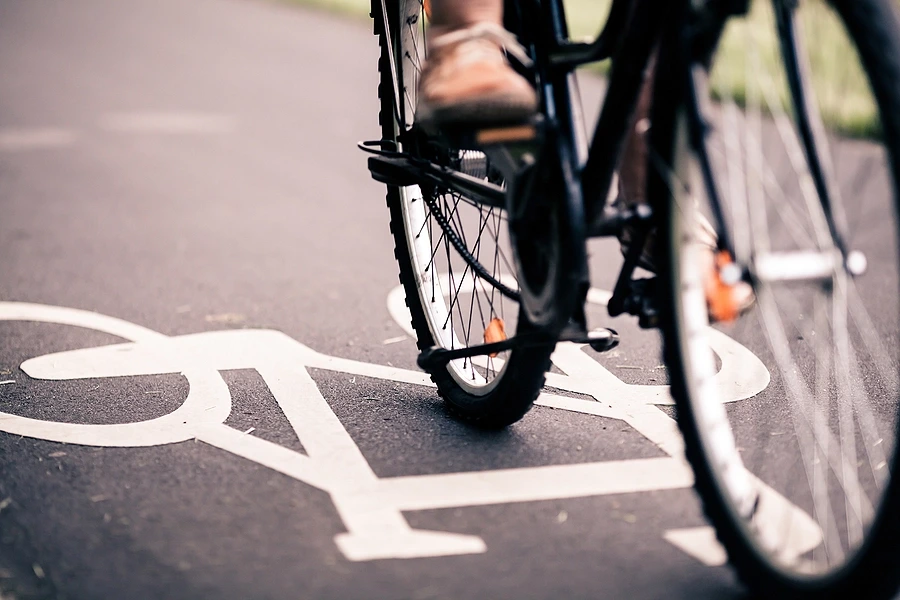Essential Information for Cyclists on Florida Laws and Rights in Palm Harbor

Cycling in Palm Harbor is both popular and practical. Whether for exercise, commuting, or recreation, cyclists share the road with drivers, pedestrians, and other cyclists. While riding can be enjoyable, it also carries risks. Understanding Florida’s cycling laws and knowing your legal rights is critical for staying safe and protecting yourself if an accident occurs.
Cyclist Rights on Florida Roads
Florida law recognizes bicycles as vehicles, granting cyclists many of the same rights and responsibilities as drivers. Cyclists are allowed to:
-
Ride in traffic lanes and on roads unless explicitly prohibited
-
Use bike lanes when available, while maintaining caution
-
Signal turns and stops using hand signals
-
Ride two abreast on roads, provided they do not impede traffic
Understanding these rights helps cyclists navigate traffic safely and assert their position legally if involved in a collision.
Key Florida Bicycle Laws
Florida has specific statutes designed to protect cyclists and promote safe interactions between vehicles and bicycles. Important laws include:
-
Helmet use – Riders under 16 must wear a helmet. While adults are not required by law to wear helmets, using one is strongly recommended for safety.
-
Lighting and reflectors – Bikes ridden at night must have a front white light, a red rear reflector or light, and reflective materials on pedals or tires.
-
Sidewalk and crosswalk rules – Cyclists using sidewalks must yield to pedestrians and follow local regulations, which may vary by municipality.
-
Traffic laws – Cyclists must obey stop signs, traffic signals, and one-way street regulations, just like motor vehicles.
These laws are in place to prevent accidents and clarify responsibilities for all road users.
Common Causes of Bicycle Accidents
Bicycle accidents in Palm Harbor can result from a variety of factors. Common causes include:
-
Motorists failing to yield or making unsafe turns
-
Distracted driving, such as texting or eating while driving
-
Poorly maintained roads with potholes, debris, or uneven surfaces
-
Bicycle malfunctions, including brake or tire failure
-
Collisions with other cyclists or pedestrians
Recognizing common hazards can help cyclists take preventive measures and maintain situational awareness on the road.
Steps to Take After a Bicycle Accident
Accidents can be stressful and confusing, but taking certain actions immediately afterward can protect your safety and legal rights. Key steps include:
-
Seek medical attention – Even if injuries appear minor, prompt medical evaluation is important for health and documentation purposes.
-
Call law enforcement – A police report creates an official record of the incident and can be vital for insurance or legal claims.
-
Document the scene – Take photographs of the bicycle, vehicles involved, road conditions, and visible injuries.
-
Collect witness information – Names and contact information from witnesses can support your account of the accident.
-
Preserve evidence – Keep your helmet, clothing, and damaged bicycle as evidence if needed for a claim.
Following these steps helps protect your ability to seek compensation for injuries, property damage, and other losses.
Filing Insurance or Legal Claims
After a bicycle accident, victims may be entitled to recover damages through insurance claims or legal action. This can include:
-
Medical expenses, including hospital bills and ongoing treatment
-
Lost wages due to time off work
-
Pain and suffering or diminished quality of life
-
Bicycle and personal property repair or replacement
In many cases, liability may fall on a motorist, a property owner, or even a municipality responsible for unsafe road conditions. Florida law allows injured cyclists to pursue compensation from at-fault parties beyond their own insurance coverage.
Understanding Comparative Negligence in Florida
Florida follows a comparative negligence standard. This means that if you were partially at fault for the accident, your recovery may be reduced by your percentage of responsibility. For example, if a cyclist is found 20% at fault, their total compensation would be reduced by 20%. Keeping detailed records and evidence can help minimize claims of negligence and support a stronger case.
Preventive Measures for Safe Cycling
Preventing accidents is always preferable to addressing injuries after the fact. Cyclists can reduce risks by:
-
Wearing helmets and protective gear
-
Using lights and reflective materials at night
-
Staying alert and avoiding distractions
-
Obeying traffic laws and signals
-
Riding defensively and maintaining a safe distance from vehicles
Safe cycling practices not only reduce the likelihood of accidents but also strengthen a cyclist’s position in potential legal claims by demonstrating responsible behavior.
The Role of a Personal Injury Lawyer
In serious accidents, consulting a personal injury lawyer experienced in bicycle cases is important. A lawyer can:
-
Evaluate the accident and determine potential liability
-
Gather evidence, including medical records, witness statements, and traffic reports
-
Negotiate with insurance companies on your behalf
-
Pursue legal action to recover full compensation if necessary
Professional guidance ensures that cyclists understand their rights, avoid common pitfalls, and pursue fair compensation for injuries and damages.
Conclusion
Cyclists in Palm Harbor enjoy the benefits of mobility, recreation, and fitness, but they also face risks on the road. Understanding Florida bicycle laws and knowing your legal rights is essential for safety and protection. Wearing proper safety gear, following traffic rules, documenting incidents, and seeking legal guidance when needed can make a significant difference after an accident. By combining preventive measures with informed action, cyclists can enjoy safer rides and protect themselves in the event of an injury.
